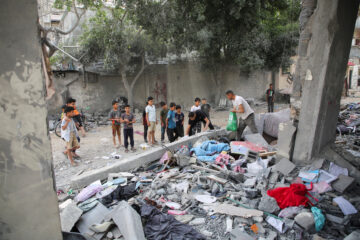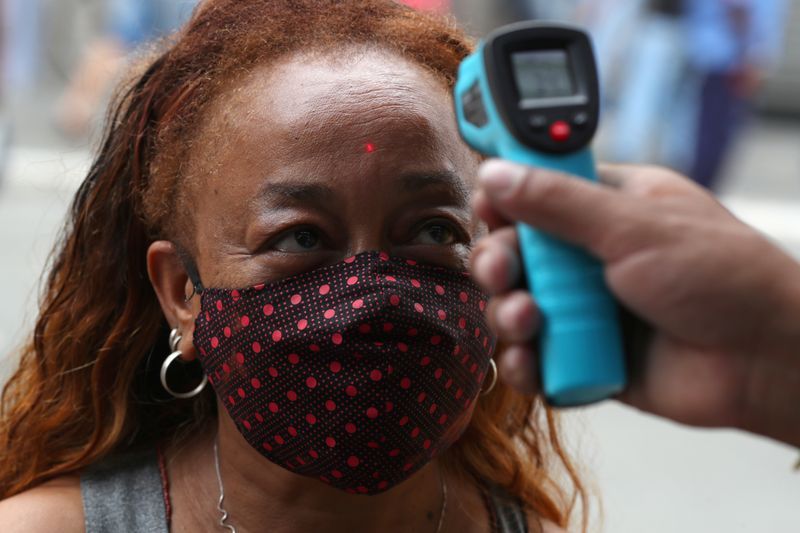Powerful storm forces thousands from homes in virus-hit Philippines
 Tens of millions more people live along Vongfong's path (AFP Photo/Alren BERONIO)
Tens of millions more people live along Vongfong's path (AFP Photo/Alren BERONIO)Tens of thousands of people were forced into cramped shelters by the powerful storm pounding the Philippines on Friday, making social distancing nearly impossible as the nation battles the coronavirus pandemic.
Typhoon Vongfong smashed homes, schools and virus quarantine sites when it hit central Samar island on Thursday, but then weakened into a severe tropical storm on its path north to the capital Manila.
The storm struck as tens of millions of Filipinos are hunkered down at home to protect themselves against COVID-19, but more than 140,000 had to flee in central Bicol region because of the powerful storm, disaster officials said.
Vongfong packed gusts up to 190 kilometres (120 miles) an hour and drenching rains when it roared into the Philippines.
“We have to wear masks and apply distancing at all times,” local police official Carlito Abriz told AFP. “It’s difficult to enforce because they (the evacuees) are stressed. But we are doing our best.”
Bicol saw less damage than hard-hit Samar, so some of those in shelters had begun to return home after the storm passed on Friday, disaster officials reported.
Authorities have said they will run shelters at half of capacity, provide masks to people who don’t have them and try to keep families grouped together.
However, many spaces normally used as storm shelters have been converted into quarantine sites for people suspected of being infected with coronavirus.
Ben Evardone, governor of the central province Eastern Samar, said local quarantine sites, schools and at least one church were levelled by the fierce wind.
“So what will happen to us now, what will we use as COVID facilities here?,” he asked. “This is a big challenge for us.”
Fortunately the central region where the storm struck first is not one of the hotspots of the Philippines’ outbreak, which has seen 12,091 reported infections and 806 dead.
– Overlapping disasters –
Tens of millions more people live along Vongfong’s path, which is forecast to take it near the densely populated capital Manila later Friday.
Disaster officials in Manila, which is the centre of the nation’s virus outbreak, said they have not ordered pre-emptive evacuations for the capital but have issued storm warnings.
Authorities have not reported any deaths so far, but disaster crews had not yet completed their assessment of hard-hit areas cut off by the storm.
It is not unheard of for disasters to overlap in the Philippines, and some 22,000 people were evacuated from the slopes of the active Mayon volcano ahead of the typhoon’s arrival.
Heavy rains in the past have sent landslides of debris cascading down the volcano, burying and killing the communities in their paths.
Typhoons are a dangerous and disruptive part of life in the Philippine archipelago, which gets hit by an average of 20 storms and typhoons each year.
The storms put millions of people in disaster-prone areas in a state of constant poverty and rebuilding.
A July 2019 study by the Manila-based Asian Development Bank said the most frequent storms lop one percent off the Philippine economy, with the stronger ones cutting economic output by nearly three percent.
Many of the areas in Vongfong’s path have already gone through much of their emergency disaster money while responding to the pandemic, and have asked the national government for help.
The country’s deadliest cyclone on record was Super Typhoon Haiyan, which left more than 7,300 people dead or missing in 2013.
SOURCE: AFP










